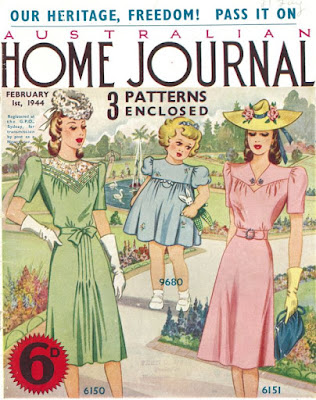These styles from 1974 give a nod towards 1930s nostalgia with
their sleek lines and geometric prints.
However, they are made of 1970s synthetic fibres, and these
advertisements do their best to sing the virtues of Estacel (an acetate fibre)
and Celesta (a polyester blend) both trademarked by Courtaulds.
“Super separates blended for action” by Sportscraft
in “silky-cool Celesta… Celesta loves machine washing and stays bright
forever.”
“Fit
the scene in action-loving Celesta—a superb combination of natural-based fibre
and long-wearing polyester” in dresses by Compass.
A “streamlined … simple skirt” and “straight-cut” pants by Compass. In Celesta, of course!
“Sun-loving body
shapes” by Image in “Estacel’s fine
silky easy-care knit.”
“Take a natural based
soft silky fibre and blend it with polyester for easy care and long life and
you have beautiful, cool, comfortable, colourfast, machine-washable
Celesta.” Knitted garments designed by Crestknit.





















